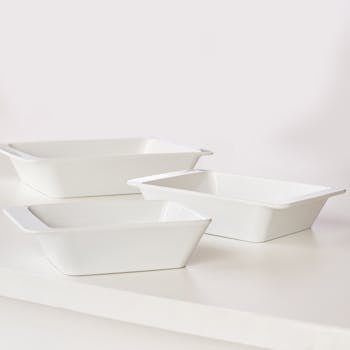Ever heard of a bublik? If you’re a fan of bagels, pretzels, or any kind of chewy, slightly sweet bread, then you’re in for a treat! This Eastern European delight is a close cousin to the bagel, but with a few key differences that make it uniquely delicious. In this guide, we’ll dive deep into the world of bublik – its history, how it compares to bagels, and even a simple recipe so you can bake your own. Get ready to expand your bread horizons!
What Exactly is a Bublik?
At its core, a bublik (sometimes spelled bublyk) is a ring-shaped bread originating from Eastern European Jewish communities. Like bagels, bubliks are boiled before baking, which gives them their signature chewy texture. However, bubliks are generally larger, thinner, and often sweeter than bagels. They also tend to have a larger hole in the middle.
Think of it as a bagel’s slightly more elegant, slightly sweeter, and definitely more adventurous cousin! While bagels have become a global phenomenon, bubliks remain a beloved treat in Eastern Europe and among diaspora communities.
A Brief History of Bublik
The history of the bublik is intertwined with the rich culinary traditions of Eastern European Jewish culture. While the exact origins are difficult to pinpoint, bubliks are believed to have emerged sometime in the 17th century, possibly in Poland or Ukraine. They quickly became a staple food, particularly among Jewish communities, and were often sold by street vendors.
Interestingly, bread making was a crucial skill and a means of survival during periods of economic hardship and persecution. Bubliks, being relatively inexpensive to make, became an essential part of the diet. Their ring shape may have had symbolic significance, representing the circle of life or the unbroken covenant between God and the Jewish people.
As Jewish communities emigrated from Eastern Europe, they brought their culinary traditions with them, including the bublik. While bagels gained more widespread popularity in North America, bubliks continued to be enjoyed within smaller communities, preserving a taste of the old world.
Bublik vs. Bagel: What’s the Difference?
The million-dollar question! Both bubliks and bagels are boiled and baked ring-shaped breads, so what sets them apart? Here’s a breakdown:
- Size and Shape: Bubliks are typically larger and thinner than bagels, with a significantly larger hole in the center. Bagels tend to be denser and more compact.
- Sweetness: Bublik dough often contains sugar or honey, giving them a slightly sweeter flavor than bagels. Bagels are usually savory.
- Texture: Both are chewy due to the boiling process, but bubliks are generally lighter and less dense than bagels.
- Toppings: While both can be enjoyed plain or with toppings, bubliks are often sprinkled with poppy seeds, sesame seeds, or even coarse salt. Bagels have a wider variety of toppings, from everything seasoning to cinnamon raisin.
In essence, think of a bublik as a sweeter, lighter, and more delicate version of a bagel. Both are delicious, but they offer distinct taste experiences.
How to Make Bublik at Home: A Simple Recipe
Ready to try your hand at baking your own bubliks? This recipe is a simplified version of traditional methods, perfect for home bakers.
Ingredients:
- 4 cups bread flour
- 1 ½ cups warm water (105-115°F)
- 2 tablespoons sugar
- 2 teaspoons active dry yeast
- 2 teaspoons salt
- 2 tablespoons vegetable oil
- Optional toppings: poppy seeds, sesame seeds, coarse salt
Instructions:
- Activate the yeast: In a large bowl, combine warm water, sugar, and yeast. Let it sit for 5-10 minutes until foamy. This indicates the yeast is active.
- Mix the dough: Add flour, salt, and oil to the yeast mixture. Mix until a shaggy dough forms.
- Knead the dough: Turn the dough out onto a lightly floured surface and knead for 8-10 minutes, until smooth and elastic. You can also use a stand mixer with a dough hook.
- First rise: Place the dough in a lightly oiled bowl, turning to coat. Cover with plastic wrap and let it rise in a warm place for 1-1.5 hours, or until doubled in size.
- Shape the bubliks: Punch down the dough and divide it into 8-10 equal pieces. Roll each piece into a long rope, about 8-10 inches long. Bring the ends together to form a ring, pinching to seal.
- Second rise: Place the shaped bubliks on a baking sheet lined with parchment paper. Cover loosely with plastic wrap and let them rise for another 30 minutes.
- Boil the bubliks: Bring a large pot of water to a boil. Gently drop the bubliks into the boiling water, 2-3 at a time. Boil for 1-2 minutes per side.
- Add toppings: Remove the bubliks from the water and place them back on the baking sheet. Brush with a little water and sprinkle with your desired toppings (poppy seeds, sesame seeds, etc.).
- Bake: Preheat oven to 425°F (220°C). Bake the bubliks for 20-25 minutes, or until golden brown.
- Cool: Let the bubliks cool on a wire rack before enjoying.
Tips for Perfect Bubliks:
- Use bread flour: Bread flour has a higher protein content than all-purpose flour, which will give your bubliks a chewier texture.
- Don’t skip the boiling step: This is essential for achieving the signature chewy crust.
- Adjust the sweetness: If you prefer a less sweet bublik, reduce the amount of sugar in the dough.
- Experiment with toppings: Get creative with your toppings! Try everything bagel seasoning, sunflower seeds, or even cinnamon sugar.
Where to Find Bubliks (If You’re Not Baking)
Finding bubliks can be a bit of a treasure hunt, depending on where you live. Here are a few places to check:
- Eastern European bakeries and delis: These are your best bet for finding authentic bubliks.
- Jewish bakeries: Many Jewish bakeries will carry bubliks, especially around holidays.
- Online retailers: Several online retailers specialize in Eastern European foods and may offer bubliks for sale.
- Farmers’ markets: Some farmers’ markets may have vendors selling artisanal breads, including bubliks.
If you can’t find bubliks locally, consider making them yourself using the recipe above! It’s a fun and rewarding baking project.
Why Bubliks Deserve More Attention
In a world dominated by bagels, the bublik deserves its moment in the spotlight. Its unique flavor, texture, and rich history make it a truly special bread. While bagels have become a global staple, bubliks offer a taste of Eastern European tradition that’s both comforting and delicious.
Moreover, supporting smaller bakeries and preserving traditional recipes is crucial in maintaining culinary diversity. By seeking out and enjoying bubliks, you’re not just indulging in a tasty treat – you’re also contributing to the preservation of a cultural heritage.
Conclusion
So, there you have it – a comprehensive guide to the wonderful world of bubliks! From their humble beginnings in Eastern European Jewish communities to their potential to become the next big thing in the bread world, bubliks are a treat worth exploring. Whether you’re a seasoned baker or simply a bread enthusiast, we encourage you to give bubliks a try. Bake your own using our recipe, seek them out at local bakeries, and spread the word about this delicious and often overlooked bread. What’s your favorite topping for a bublik? Let us know in the comments below!








